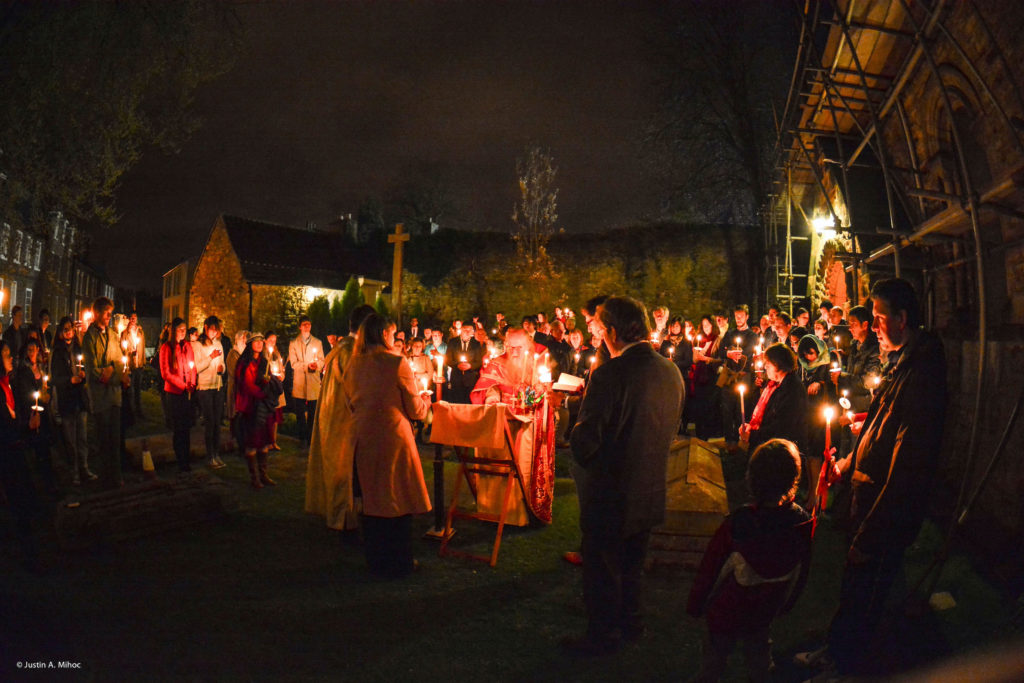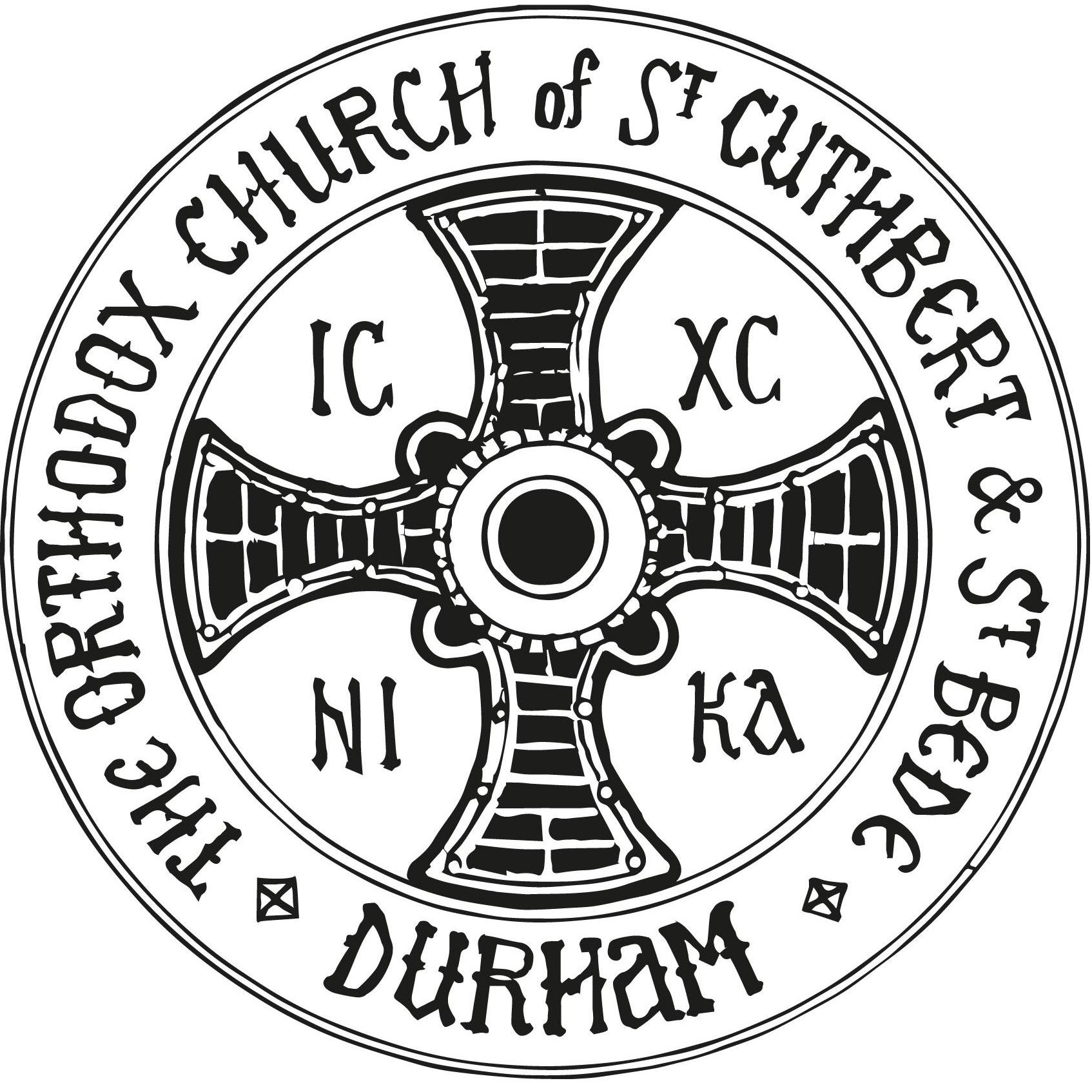On the date of Pascha
Why does the Orthodox Church celebrate Pascha on a different date from the rest of Christendom?
First of all, a clarification: we don’t celebrate Pascha on a different date from ‘the rest of Christendom’, just from the West. All the Churches that are called ‘Oriental Orthodox Churches’, for example, the Coptic Church of Egypt, the Syrian Orthodox Church, the Armenian Church, the Ethiopian Church, and so on—all these keep Pascha at the same date as we do. But why? Pascha, as we rightly call it, is the Greek form of Passover, the Jewish feast celebrating the Exodus from Egypt. The early Christians had various different customs—some kept Pascha with the Jews, on the full moon in the middle of the first lunar month of the year, some, and this became the universal practice, confirmed at the first Œcumenical Council of Nicaea (held in ad 325), kept the Christian Pascha on the Sunday following the Paschal full moon, because Sunday celebrates the Resurrection, which is the completion of the Paschal mystery—the mystery of Christ’s death and resurrection, which celebrates our freedom from death. Thenceforth for all Christians, Pascha/Easter is to be kept on the first Sunday after the first full moon after the Spring Equinox. One can think of this as a way of bringing together the three cycles that govern the way we live: the weekly cycle, beginning each week with Sunday, the monthly cycle, which is governed by the rise and fall of the moon each month, and the yearly cycle, which we think of as connected with the time it takes for the earth to make a complete circuit round the sun, but which one could also think of in terms of the cycle of the seasons—Spring, Summer, Autumn, Winter. These three cycles—the week, the month, the year—don’t fit together at all exactly. The lunar month is a bit longer than four weeks; the year is a bit longer than twelve lunar months; so calendars need some system of adjustment if the year is not to keep on falling back, or getting ahead of itself, so that the date of the fixed points—the two equinoxes (spring and autumn, when day and night are equal) and the two solstices (when the sun is at its highest and the day is longest, in summer, and at its lowest and the day shortest, in winter)—don’t keep creeping back, as they will if the calendrical ‘year’ is too long, or vice versa. It is this attempt to align month and year, that has led to the unequal months that we have: most of them either 30 or 31 days long (the lunar month is, inconveniently, just over 29½ days long), and February either 28 or 29 days long. This arrangement of months goes back to the time of the first Roman emperor, Julius Caesar, who introduced what is called, after him, the Julian Calendar in 46 bc (it is, like most things, a bit more complicated than that). Christianity was born in the Roman Empire, and inherited the Julian Calendar. The length of the year in days according to the Julian Calendar is either 365 or 366; the actual length of the solar year is just less than 365¼ days, so with a leap year (with Feb 29, and therefore 366 days) every four years, the year keeps on being pulled back to where it ought to be.
(Are you with me?) When the Church decided to work out for itself the date of Pascha, it had to devise some method of predicting this (and certainly after the introduction of a 40-day Lent in the latter part of the fourth century, as one needed to know, well in advance, when Easter was going to fall). So systems were devised, in Alexandria, which was the great centre in the ancient world of astronomical learning, that enabled the date of Easter to be predicted: that is, to predict when the first Sunday after the full moon after the spring equinox would fall. There were differences in detail about how to do it, but essentially everyone was trying to follow the decision of Nicaea in 325; at that council it seems to have been decided that it was the duty of the Patriarch of Alexandria to publish, in January, the date of Easter that year, and of course once you knew how to do it, you could produce tables giving the date of Easter for the next few years.
So everyone kept Pascha according to the Julian Calendar for centuries. However, the Julian Calendar is not quite accurate; it overcompensates, adding just a little bit too much each four years, when it adds an extra day to make a leap year. You wouldn’t notice this in a lifetime; but you would notice it if you compared the date of equinoxes and solstices that people several centuries back had recorded. Or, another way of putting it, in calculating the date of Pascha calendrically, the date of the spring equinox (which you can’t observe accurately) has to be fixed calendrically: at 21 March. But after a few centuries, it was clearly the case that the actual calendrical day called 21 March was not the spring equinox at all: the actual equinox had already passed. By the fourteenth century, it was clear that the calendar no longer corresponded to the year. Both in the Byzantine Empire and in the West, people started to think about some way of rectifying this. Nothing happened in the Byzantine empire: it fell to the Turks in 1453, and nothing came of the ideas for adjusting the calendar. In the West, what transpired was the Gregorian Calendar, called after Pope Gregory XIII, who introduced it in 1582. The Gregorian Calendar did two things: (1), a one-off, 4 October 1582 was to be followed by 15 October, so that the calendar once more coincided with the ‘real’ year with the equinoxes on 20/21 March and 21/22 September, and the solstices on 20/21 June and 20/21 December. People ‘lost’ ten days; they were not pleased! and (2) leap years would continue to occur every fourth year (when the number of the year was divisible by 4), except for the centuries, which would only be leap years if they were divisible by 400 (so, 1800 and 1900 were not leap years, but 2000 was); that little correction—3 days every 400 years—was thought to be about right to keep the calendar aligned with the year. Only Catholic countries introduced the new Gregorian Calendar then, most Western countries followed later, England not till 1752 (when the gap had increased to 11 days). The gap between the Julian and Gregorian Calendar is now 13 days (today 14 April on the Gregorian Calendar is 1 April on the Julian Calendar).
Whether you keep to the Julian or the Gregorian Calendar, you calculate the date of Pascha in the same way—calendrically, based on calculating the Golden Number of the year, and fitting this into a set of rules, one of which is that Pascha cannot fall before 21 March (in your calendar), which it understood to be the spring equinox. If you do that with the Gregorian Calendar, you generally get the correct date: as this year—the spring equinox was on 20 March, the full moon after than was on 8 April, so Pascha was on 12 April. If you use the Julian calendar, then Pascha cannot fall before 21 March on the Julian Calendar, which corresponds to the 3 April on the calendar we all use. But there is another problem: because those on the Julian calendar are using a calendar that does not fit with astronomical reality, the ‘predicted’ full moon is not real, but conjectural, and this year fell on 12 April, a Sunday itself, so Pascha is the next Sunday, that is 19 April. If the real paschal full moon falls after 3 April and is early enough in the week, the Western and Eastern Easter coincide, but more often Eastern Easter will be a week later. If the real paschal full moon (that is, the one after the spring equinox) falls before 3 April, then it doesn’t count for those using the Julian calendar, and we have to wait for the next one, which means that Pascha is either four weeks later or (more usually) five weeks later. Next year, for example, Western Easter will be on 4 April, the full moon falling in the week before—but therefore before 3 April (‘spring equinox’, according to the Julian calendar), so those using the Julian calendar have to wait for the next full moon, and so end up with Pascha on 2 May, four weeks later.
The ‘solution’ could be to abandon calendars and complex calendrical calculations and just keep Pascha on the first Sunday after the full moon after the spring equinox (or the next Sunday if the full moon falls on a Sunday), taking Jerusalem as the basis for calculating the day of the full moon: a calculation which could be made astronomically. This proposal was originally on the agenda for the Holy and Great Synod of Crete of the Orthodox Church held in 2016; but, like most items the least controversial, this proposal was removed before the Synod met.

